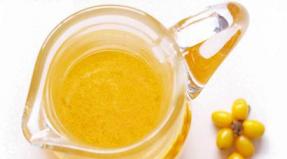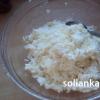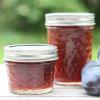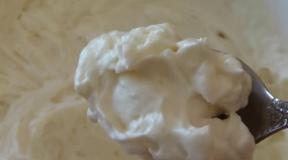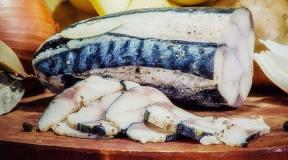How to properly use and care for pans! Note to the hostess! Prepare a cast-iron pan or cauldron before the first use: how to do it in the oven, on the burner and in the fire.
When purchasing new cast iron dishes, it is not recommended to immediately cook on it. It is important to know how to ignite a cast iron skillet for a long and reliable service. I will tell you how to do it.
The need for annealing is due to some features of cast iron cookware:
- A new cast iron frying pan is processed in production with special materials that protect the metal and give the dishes a presentation. At the same time, substances acting as a protective layer are not always safe, and sometimes emit a pungent odor when evaporated.

- It is necessary to ignite the cast iron skillet after purchase, as protective industrial grease can spoil the taste of cooked dishes.
- The properties of cast iron allow, over time, to absorb the substances with which the metal has come into contact. Microscopic food debris clogs in the pores, which spoils appearance, gives a specific color and smell. This can contribute to the appearance of rust. To avoid this, it is necessary to ignite the cast iron pan.

- Annealing before using for the first time will allow you to check the quality of your new utensils. Poor quality cookware may crack, deform, or bubbles.
That is why the key to a long and faithful service of the vessel is its correct calcination.
At the first signs of deformation and damage to the surface of the frying pan, remove it from the heat and present a claim to the store where it was purchased. A decent seller will definitely refund its cost or replace the damaged utensils with an equivalent one.

There are three ways to process a cast iron pan before the first use:
- using vegetable oil;
- using salt;
- in the oven.
Each method of calcination is effective in its own way, and combining several methods will allow you to achieve the best effect.
Salt treatment
For processing, ordinary table salt is required, preferably coarsely ground, you can also use rock salt:
| Image | Instructions |
 |
Step 1
Wash the container in warm water and soapy water or use detergent. Rinse well. |
 |
Step 2
Wipe dry your cast iron skillet with a paper or kitchen towel. |
 |
Step 3
Place the cookware over medium heat and wait until it warms up and the remaining water droplets evaporate. |
| Step 4
Scatter a layer of salt so that it completely covers the bottom and leave on fire, stirring occasionally. |
|
 |
Step 5
It is likely that when the surface of the pan is heated, an unpleasant odor may appear, but you should not be intimidated. You can understand that the process is coming to an end by the salt that has changed its color: it will be of a yellowish-brown hue. |
 |
Step 6
When the salt turns yellow, remove it and rinse the utensils with hot water, but without detergent. Then wipe dry. |
 |
Step 7
Grease the surface with oil and re-fire the pan. |
Annealing with oil
How do I prepare a cast iron skillet before using it for the first time? The use of vegetable oil for solving this problem is very popular and effective:
| Image | Instructions |
 |
Step 1
Wash the frying pan you just bought with dish soap. Wipe dry. |
 |
Step 2
Place the container on the stove and heat it for 3-5 minutes. |
 |
Step 3
Gently pour in the vegetable oil so that the bottom is completely hidden under it (as in the photo). Leave it on for 20-30 minutes. |
 |
Step 4
Drain the used oil, let the dishes cool slightly and pat dry with a paper towel until all grease is gone. |
In order to properly ignite a vessel, it is advisable to use olive oil, but since the price for it is significantly higher than sunflower oil, its use is not prohibited.
Oven processing
How do I prepare a new cast iron skillet for use with the oven? It's very simple: just grease the entire inner surface of a clean frying pan with oil and load it to languish in a hot oven for an hour or two.
In this case, you need to put the dishes upside down, and put baking paper under it so that the oil drips.

By the way, you can ignite an aluminum pan in the same way, as well as by the methods indicated above. It is important that the oil, after calcining, forms a special protective film that protects the surface of the cast iron product from rust and food particles.
Output
A cast iron pan must be calcined using high temperatures and oil before using it for the first time. This will remove the industrial protective layer and reliably preserve the utensils in future use.
As you can see, there is nothing complicated in this process and you can easily repeat it with your own hands. The video in this article will clearly help you understand all the intricacies of the process. And questions and suggestions can be expressed in the comments.
Kitchen utensils are most often metal, thereby ensuring greater reliability and practicality in use. Although some types of metal tend to corrode, which significantly complicates the operation of products. And when a new frying pan is purchased, the hostess often has a question: - How to prepare it for use, so that it will serve for a long time and reliably? Let's find out.
It does not corrode at all if its alloy has the correct proportion of chromium and nickel (18/10), but still it must be prepared for the first use, namely, to ignite the pan when it is new.
For this, the product is thoroughly washed and dried. Vegetable (refined) oil is poured onto the bottom about 1 cm thick, salt is poured, the pan is placed on medium heat for 15-20 minutes. As soon as the first smoke appears, the fire turns off - the ignition is over.
The final step. Salt and oil are removed from the pan, excess oil is thoroughly cleaned with a napkin. The product is not washable and is ready for the first use.
How are cast iron cookware prepared?
A new cast-iron frying pan must go through a stage of calcining in oil, which creates a natural non-stick layer, which further provides a golden crust on the product and does not stick to the bottom. How does this happen?
The pan is thoroughly washed with warm water and dish detergent (eg Fairy, Aos). The outside is wiped off, the inside remains damp. The product is placed on the stove over medium heat. As soon as the last drops have evaporated, this is a signal that the pan has warmed up to 100 ° C.
Next step. Protective mittens (gloves) are put on and the inside of a hot pan is lubricated with vegetable or linseed oil. Time is given for the product to cool down to a warm state. Then the same procedure is done a couple more times: it heats up; lubricated inside with oil; cooling down. If there is a cast-iron lid in the kit, then this procedure must be done in the oven, and not on the hob, turning the product itself over.
Do I need to ignite with salt? It is necessary in the event that the new cast iron product is heavily coated with industrial grease. It can be extremely difficult to completely wash it with water and detergent. Then the salt is poured into the pan, covering the bottom and walls as much as possible. The product is placed on medium heat. As soon as the salt begins to change color (this happens at 20-30 minutes), the calcination ends. Then the hot frying pan is also rubbed with oil, cooled down and heated a couple more times, rubbed and cooled.

Some manufacturers and the creation of a natural non-stick layer do themselves. To find out, you need to carefully read the label. In this case, the new frying pan is simply washed, dried and ready to use.
If the product was subjected to strong mechanical stress during cleaning and washing (scraping, using metal scouring pads and active, chemical agents), then after such a procedure it must be dried over a fire and the inside should not be greased. big amount vegetable oil.
How is an aluminum product prepared?
Preparation follows the same principle as in the case of a steel pan. The product is washed, dried and filled with vegetable oil with two tablespoons of salt per centimeter. Set on medium heat. After 15-20 minutes, the salt usually changes color and a slight smoke appears.
Next step. it is cleaned of salt, oil, the excess is carefully wiped off with a napkin. Rinse with warm water (no detergents) and wipe dry. Although you can not rinse.
How is a non-stick frying pan prepared?
Products with annealing are strictly prohibited. In this case, the pan is thoroughly washed with a sponge and a mild dish detergent and dries well. The inside is wiped with a napkin dipped in a small amount of vegetable oil.
In the future, during operation, the inner layer can be periodically lubricated with a small amount of vegetable or linseed oil to maintain the best non-stick surface properties. The same can be done with ceramic coated cookware.
Watch a 5-minute video to show how the professionals prepare new pans for their first use:
Is it dishwasher safe?
Which pans can and cannot be washed in the dishwasher? A question that worries many. As practice shows, all pans, except for steel ones, are not recommended to be washed in a dishwasher. There is only one reason: the non-stick layer disappears. As a result, the pan was washed "to a squeak", but completely devoid of non-stick properties. Although manufacturers often recommend using a dishwasher when using pans. This is a slyness and a clear marketing ploy to increase the sales of your products.
Often in home economics, it becomes necessary to anneal a cast-iron pan. This is done for different purposes: before the very first use (many manufacturers require this), for cleaning, so that pancakes and pancakes can be baked, etc. In general, there can be many reasons. But how to carry out the procedure correctly so as not to harm yourself or the frying pan, we will tell you below.
Why ignite a frying pan
It is customary to ignite a frying pan in several cases. Let's take a look at the most common ones.
- After the purchase. Often, traces of factory grease remain on the surface of the dishes, which are not very pleasant to eat. In this case, the pan is ignited to remove them.
- For the cleaning. In the process of prolonged use of a cast-iron pan, carbon deposits form on its working surface. In fact, this is already burnt oil and fat, which are also not suitable for use in food. In this case, calcining is necessary in order to get rid of carbon deposits.
- For preparing pancakes. Our grandmothers also used roasted old pans for baking pancakes and pancakes. In this case, all the absorbed oil is also removed from the surface, it becomes clean, dry and ideal for preparing a treat.
So, whatever the reason, but if you need to efficiently and effectively ignite a cast-iron frying pan without damaging it in any way, we are ready to help solve the issue. In total, there are several ways to cope with the task.
Method one: use salt
This method is the most famous, simple and widespread. It does not require a lot of effort, but you still have to monitor the condition of the pan. So, first prepare the dishes for the procedure:
- Wash the pan thoroughly with the obligatory use of detergent. Rinse so no foam remains. Dry the pan so that it is completely dry.
- Check: the surface must be perfectly clean, free of dried food residues or traces of burnt oil.
Now you can start calcining. Place a 1-inch layer of common table salt on the bottom of the skillet. It is usually advised to use a coarse grind, but in fact, any will do. Naturally, it is better to take the most common, cheap salt, without any additives and not iodized.
We put the filled frying pan on the fire. The calcination itself lasts about 20 minutes, and you may smell an unpleasant smell. This is fine. After completing the process, just throw out the salt, it is no longer suitable for further use.
This is not the end of the procedure. Pour a small amount of refined vegetable oil into the bottom of a charred skillet and heat again for 20 minutes. The oil can be replaced with fat or lard, the effect will be the same. Now the dishes are ready for use (of course, the oil is drained, and the pan itself is rinsed under running water without the use of additional agents, it is simply rinsed and wiped off).
Let's see why it is necessary to use salt. This substance is an excellent natural absorbent. It absorbs all harmful residues, making the cast iron work surface almost perfectly clean. That is why this method of roasting a frying pan has been used for a long time.
Method two: use vegetable oil
This method is much more extreme than the first. If you're not careful or don't follow the liquid, the oil can flash, but it is quite fast and effective. This is how it is done.
We take a previously cleaned and completely dry frying pan (there should not be any drops of water on it at all). Pour in as much oil as possible. Usually, unrefined vegetable is used for such purposes, it does not give an odor. Remember that in the process of roasting the frying pan, burning particles of food and absorbed oil, which can smell very unpleasant, therefore, you should not aggravate it with a pronounced smell of unrefined. However, if that doesn't scare you, you can use it as well.
We put a frying pan with poured oil on the fire, heat it up and keep it on the stove for half an hour. After that, wash off the used liquid, wash the dishes well under running water. Everything you can use to prepare healthy and safe food.
Method three: in the oven, without too much fuss
This method is ideal for busy people who do not want to carry out all the above manipulations. But it is not as effective as the first two.

So, first, again, let's prepare the dishes for the upcoming procedure:
- We will wash it under running water, always using a special detergent;
- Take a clean cloth, saturate it with vegetable oil (but not much);
- Wipe the pan dry;
- Gently grease it with a cloth soaked in oil;
- Preheat the oven to 180 degrees Celsius.
That's it, now you can start working directly. Turn the pan upside down and carefully put it in the oven, which can be turned off after an hour. However, after turning off the dishes, we do not reach them, but leave them inside until they cool completely. Here's a "lazy" way. But, as you can see, it takes significantly longer than the first two.
Whichever method you choose to ignite the frying pan, remember to take all precautions. First, oil is extremely flammable and can easily ignite if misused. Secondly, pouring out the used liquid and pouring out the salt is best not immediately, but only after they have completely cooled down. This is both more efficient and safer.
Cast iron is a very high quality material that is ideal for thermal processing of food. However, it has special pores that become clogged over time, and cooking on such dishes becomes not very pleasant. In addition, food can have different flavors. To get rid of such a problem, it is recommended to periodically ignite the pans. During the procedure, all the past oil and food particles burn out, and the dishes again acquire all their positive qualities. That is why it is important not to forget about calcining and sometimes carry out it.
A few secrets
- Cast iron pan oil is not only a non-stick substance, but also a kind of lubricant. If you periodically ignite the dishes using this liquid, after a while nothing will burn on it.
- After carrying out a similar procedure, the pan can be rinsed with cold water.
- For real cast iron, annealing is a necessary and very useful procedure. After it, the frying pan only gets better, it does not deform or crack in any way. If such a nuisance occurs, you have been sold a substandard product.
- Finally, if your cast iron skillet is coated with enamel, you shouldn't fire it. In addition, such dishes are not scary to wash in the dishwasher, and you can also store food in it. By the way, it is strictly forbidden to store food in an ordinary cast-iron pan, as well as leaving it wet: this will spoil the dishes.
Cast iron is a great material for a frying pan. It is easy to use and durable. Take good care of your frying pan, and it will give you a lot of delicious dishes!
Video: preparing a cast iron pan for use
over the frying pans! Note to the hostess!
How to use and care for
behind pans with teflon coating:
How to use and care for
behind cast iron pans:
Before the first use, the cast iron pan must be prepared so that the food does not stick to the bottom. Wash the pan with hot soapy water and dry. Using a cloth dipped in vegetable oil, wipe the entire pan - even the lid and the outside of the pan. Heat upside down in the oven for 1 hour at 180 ° C. Turn off the oven and, without removing the pan, cool it completely.
Before washing, cast iron pans should be wiped with paper and then washed with hot water and soap with a non-scratching sponge. When washing cast iron pans, you do not need to scrape or use abrasive detergents. If food leftovers stick to the surface of the pan too much, heat some water with dishwashing liquid or vinegar and salt solution in it and leave to cool for a while. Burnt food residues can also be wiped off with dry salt.
Cast iron can rust from water. Therefore, after washing, the cast-iron pan must be quickly dried - wiped dry or heated on the burner for 2-3 minutes. By the way, if the pan is not planned to be used for a long time, it is better to warm it up on the burner after washing for several minutes and lightly grease it with vegetable oil.
In most cases, cast iron pans cannot be washed in the dishwasher, as this can cause rust.
Rust in a cast iron skillet can be fought with vegetable oil. It is necessary to grease the pan with oil and ignite it. To prevent rust from reoccurring, grease the pan with oil after each wash.
Despite its weight, cast iron cookware is very fragile and may crack if dropped.
If your cast iron skillet is not coated with enamel, then it is not recommended to leave cooked food in it - otherwise the food may turn black.
How to use and care for
behind the stainless steel pans:
It is known that stainless steel cookware quite durable in itself, but despite this, good care will not hurt it. So that your stainless steel has always remained new, it is necessary to follow some recommendations. To begin with, you need to learn that you cannot wash stainless steel dishes with abrasive cleaning agents. This can scratch the glossy surface of the cookware and quickly tarnish. Almost every store that sells such dishes also offers a lot of special detergents for washing dishes made of stainless steel, as well as special sponges for it. When using such funds (very inexpensive, by the way), you can significantly extend the life and keep the "presentation" of the stainless steel.
It should also be remembered that if you wipe dry after washing stainless steel cookware, especially if the dishes are decorated with inserts of other metals (for example, copper), this will also prolong its existence. This will prevent possible dark stains on the dishes.
Dear hostesses, if you decide to replenish your range of kitchen utensils with modern innovations, more convenient to use. Vikimart is a huge assortment, excellent quality and the lowest prices. Hurry up to purchase the necessary goods at low prices and get a gift for it. The collapse of prices, promotions and gifts to its customers are offered by the online shopping center Vikimart.
When purchasing new cast iron dishes, it is not recommended to immediately cook on it. It is important to know how to ignite a cast iron skillet for a long and reliable service. I will tell you how to do it.
The need for annealing is due to some features of cast iron cookware:
- A new cast iron frying pan is processed in production with special materials that protect the metal and give the dishes a presentation. At the same time, substances acting as a protective layer are not always safe, and sometimes emit a pungent odor when evaporated.

- It is necessary to ignite the cast iron skillet after purchase, as protective industrial grease can spoil the taste of cooked dishes.
- The properties of cast iron allow, over time, to absorb the substances with which the metal has come into contact. Microscopic food debris gets clogged into the pores, which spoils the appearance, gives a specific color and smell. This can contribute to the appearance of rust. To avoid this, it is necessary to ignite the cast iron pan.

- Annealing before using for the first time will allow you to check the quality of your new utensils. Poor quality cookware may crack, deform, or bubbles.
That is why the key to a long and faithful service of the vessel is its correct calcination.
At the first signs of deformation and damage to the surface of the frying pan, remove it from the heat and present a claim to the store where it was purchased. A decent seller will definitely refund its cost or replace the damaged utensils with an equivalent one.

There are three ways to process a cast iron pan before the first use:
- using vegetable oil;
- using salt;
- in the oven.
Each method of calcination is effective in its own way, and combining several methods will allow you to achieve the best effect.
Salt treatment
For processing, ordinary table salt is required, preferably coarsely ground, you can also use rock salt:
| Image | Instructions |
 |
Step 1
Wash the container in warm water and soapy water or use detergent. Rinse well. |
 |
Step 2
Wipe dry your cast iron skillet with a paper or kitchen towel. |
 |
Step 3
Place the cookware over medium heat and wait until it warms up and the remaining water droplets evaporate. |
| Step 4
Scatter a layer of salt so that it completely covers the bottom and leave on fire, stirring occasionally. |
|
 |
Step 5
It is likely that when the surface of the pan is heated, an unpleasant odor may appear, but you should not be intimidated. You can understand that the process is coming to an end by the salt that has changed its color: it will be of a yellowish-brown hue. |
 |
Step 6
When the salt turns yellow, remove it and rinse the utensils with hot water, but without detergent. Then wipe dry. |
 |
Step 7
Grease the surface with oil and re-fire the pan. |
Annealing with oil
How do I prepare a cast iron skillet before using it for the first time? The use of vegetable oil for solving this problem is very popular and effective:
| Image | Instructions |
 |
Step 1
Wash the frying pan you just bought with dish soap. Wipe dry. |
 |
Step 2
Place the container on the stove and heat it for 3-5 minutes. |
 |
Step 3
Gently pour in the vegetable oil so that the bottom is completely hidden under it (as in the photo). Leave it on for 20-30 minutes. |
 |
Step 4
Drain the used oil, let the dishes cool slightly and pat dry with a paper towel until all grease is gone. |
In order to properly ignite a vessel, it is advisable to use olive oil, but since the price for it is significantly higher than sunflower oil, its use is not prohibited.
Oven processing
How do I prepare a new cast iron skillet for use with the oven? It's very simple: just grease the entire inner surface of a clean frying pan with oil and load it to languish in a hot oven for an hour or two.
In this case, you need to put the dishes upside down, and put baking paper under it so that the oil drips.

By the way, you can ignite an aluminum pan in the same way, as well as by the methods indicated above. It is important that the oil, after calcining, forms a special protective film that protects the surface of the cast iron product from rust and food particles.
Output
A cast iron pan must be calcined using high temperatures and oil before using it for the first time. This will remove the industrial protective layer and reliably preserve the utensils in future use.
As you can see, there is nothing complicated in this process and you can easily repeat it with your own hands. The video in this article will clearly help you understand all the intricacies of the process. And questions and suggestions can be expressed in the comments.
